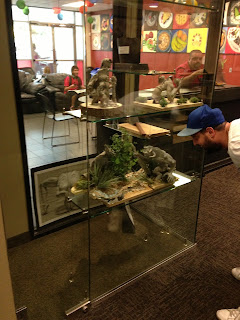I have done quite a bit of work on
my dragonoid character model. Learning how to model the human form is a daunting
task. It takes studying anatomy, knowing how to place your edges and vertices
in the 3D program you are using to the next level. I used 3D Studio Max to
create this character. To start you have to have a good reference. If your reference
does not have the right anatomy then your model surely will not. To make a good
reference model sheet you must draw using guide lines; top of the head, eyes,
ears, body mid-point, end of hands, and at the wrists. These are just a few.
Using these will at least give you the correct positioning of each body part in
the front, side, and back view. Drawing the back of the character is not always
needed; it is used if you have an asymmetrical character. Yet it is useful
information while you are modeling. The more information you have the easier it
will be to model the character.
Once here you can start visually
laying out your mesh on your character. You will need extra geometry in places
like elbows and needs to be able to animate the character correctly. You always
have to think about the next step when modeling. How are you going to lay out
the UVs? How far will the character be reaching with his arm or legs? Keeping this
in mind will keep everyone on the team happy. If you doing it on your own, then
it will just save you time in the long run and not have to worry about stretching
of the textures or how difficult it is to rig.
After I modeling the character I took
it into Zbrush and made a high poly sculpt for baking. This is how I got my
results.









